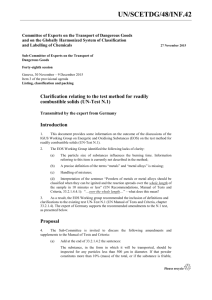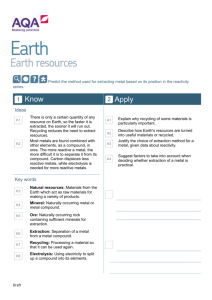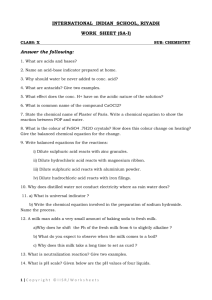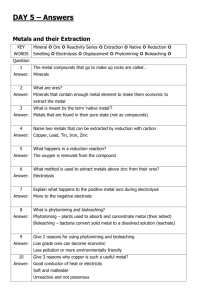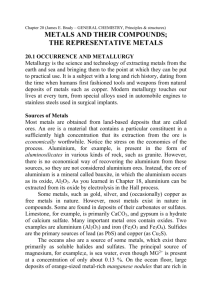Document 7171053
advertisement
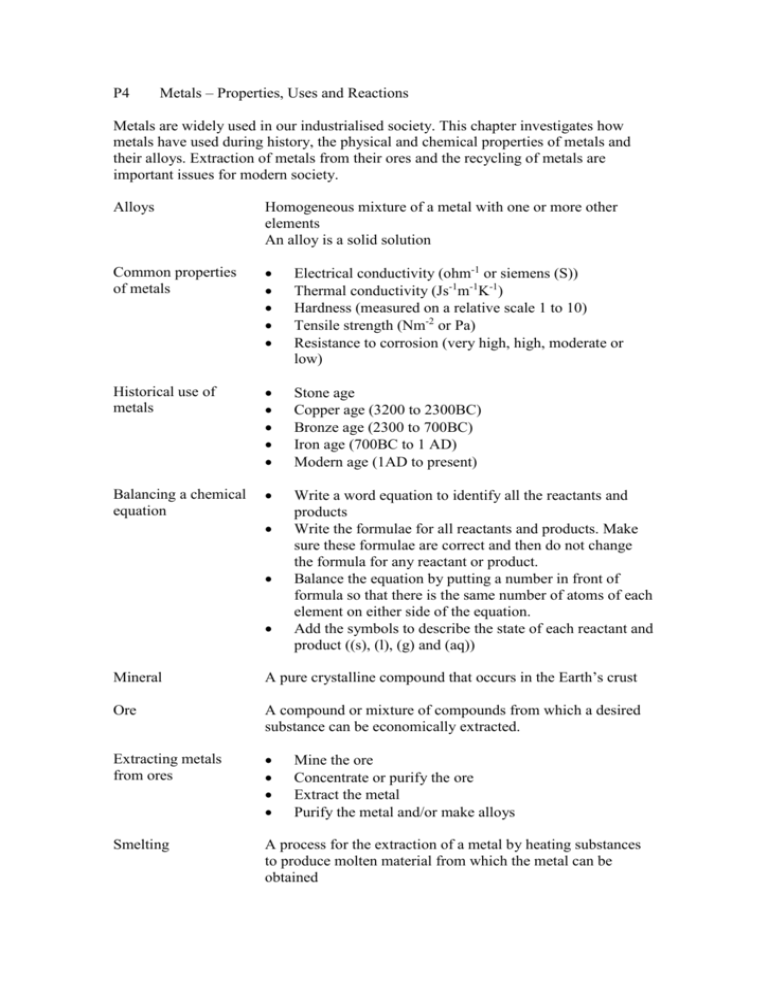
P4 Metals – Properties, Uses and Reactions Metals are widely used in our industrialised society. This chapter investigates how metals have used during history, the physical and chemical properties of metals and their alloys. Extraction of metals from their ores and the recycling of metals are important issues for modern society. Alloys Homogeneous mixture of a metal with one or more other elements An alloy is a solid solution Common properties of metals Electrical conductivity (ohm-1 or siemens (S)) Thermal conductivity (Js-1m-1K-1) Hardness (measured on a relative scale 1 to 10) Tensile strength (Nm-2 or Pa) Resistance to corrosion (very high, high, moderate or low) Historical use of metals Stone age Copper age (3200 to 2300BC) Bronze age (2300 to 700BC) Iron age (700BC to 1 AD) Modern age (1AD to present) Balancing a chemical equation Write a word equation to identify all the reactants and products Write the formulae for all reactants and products. Make sure these formulae are correct and then do not change the formula for any reactant or product. Balance the equation by putting a number in front of formula so that there is the same number of atoms of each element on either side of the equation. Add the symbols to describe the state of each reactant and product ((s), (l), (g) and (aq)) Mineral A pure crystalline compound that occurs in the Earth’s crust Ore A compound or mixture of compounds from which a desired substance can be economically extracted. Extracting metals from ores Smelting A process for the extraction of a metal by heating substances to produce molten material from which the metal can be obtained Mine the ore Concentrate or purify the ore Extract the metal Purify the metal and/or make alloys Extraction reactions Most extraction reactions require the input of considerable amounts of energy and this energy depends on the reactivity of the metal being extracted. Reactivity of metals Metals display a wide range of reactivity with other substances Oxygen Dilute acids Chemical equations Neutral species equations Zn(s) + 2HCl (aq) Complete ionic equations Zn(s) + 2H+(aq) + 2Cl-(aq) Net ionic equations Zn(s) + 2H+(aq) ZnCl2(aq) + H2(g) Zn2+(aq) + 2Cl-(aq) + H2(g) Zn2+(aq) + H2(g) Spectator ions Ions that do not undergo any chemical change during the reaction Oxidation-reduction reactions Oxidation Loss of electrons Reduction Gain of electrons Half-equations Describe either the oxidation half-reaction or the reduction half-reaction separately Acids Substances that produce hydrogen ions (H+) Bases Substances that either contain the oxide or hydroxide ion or which produce the hydroxide ion when dissolved in water Alkali Soluble base Activity series of metals List of metals from the most reactive to the least reactive (K, Na, Li, Ba, Ca, Mg, Al, Zn, Fe, Sn, Pb, Cu, Ag, Pt, Au). Electron transfer reactions Also known as redox reactions The activity of a metal depends on its ionisation energy. The further to the right a metal is in the activity series the more easily it can be extracted from its ores Ionisation energy The energy needed to remove an electron from a gaseous atom of an element. Factors affecting the price of metals Abundance and location of the ores of the metal Cost of extracting the metal from the ore Cost of transporting the metal or its ores to the required location Steps in recycling a metal Collect the used products Transport the collected material to a central processing plant Separate the required substance from the impurities Re-smelt the metal into ingots Advantages of recycling of metals Less energy is used in recycling metals than in extracting the metal from its ore Finite natural resources (non-renewable resources) are preserved Less rubbish to be disposed of

